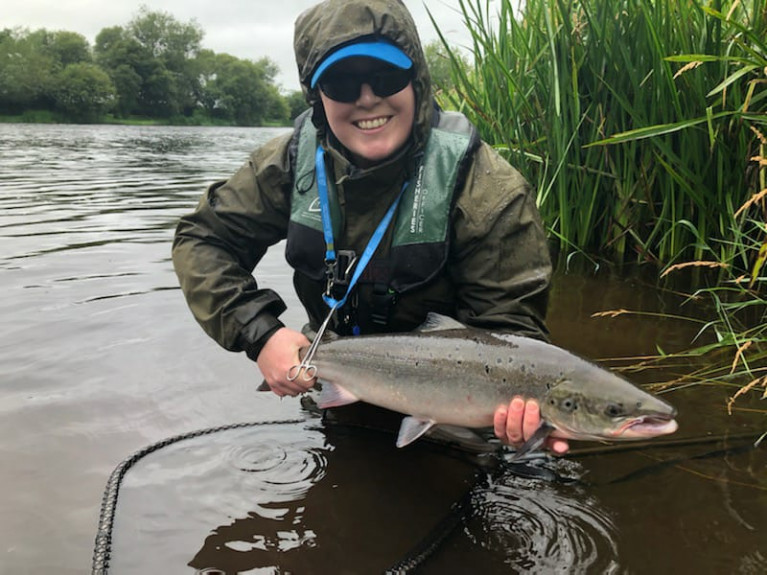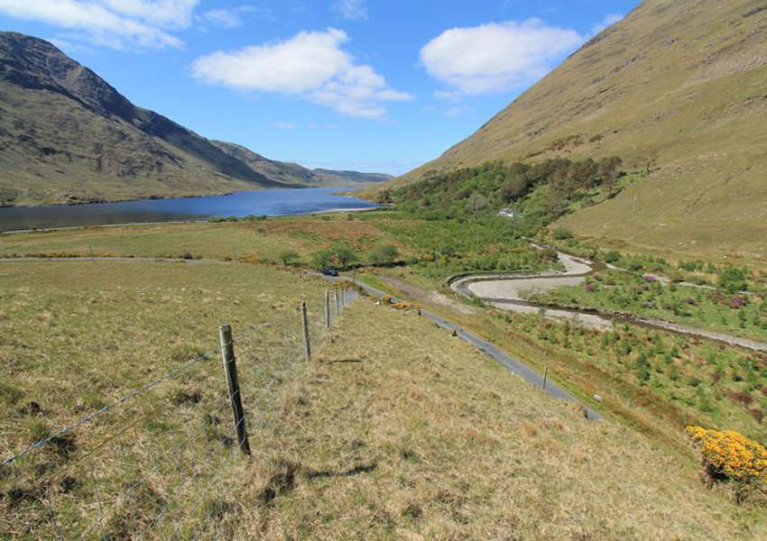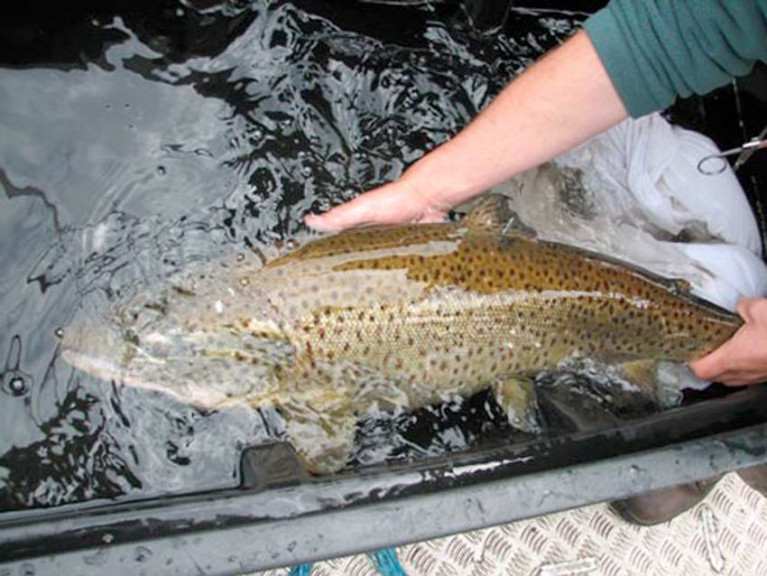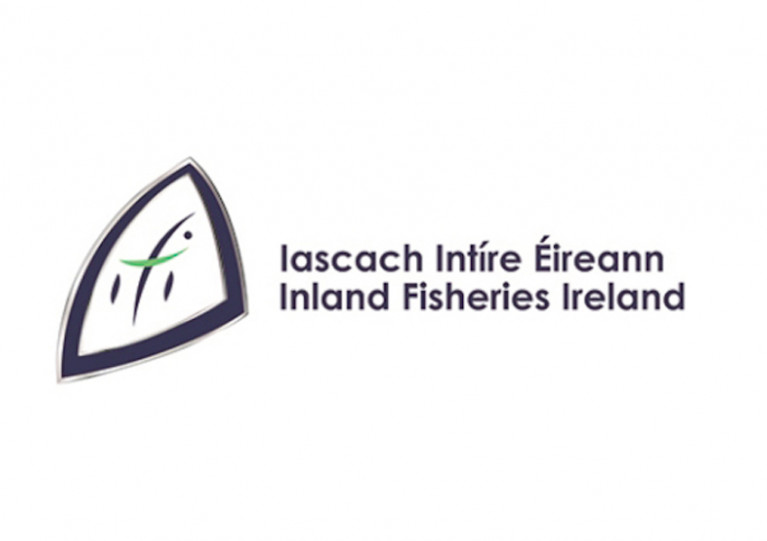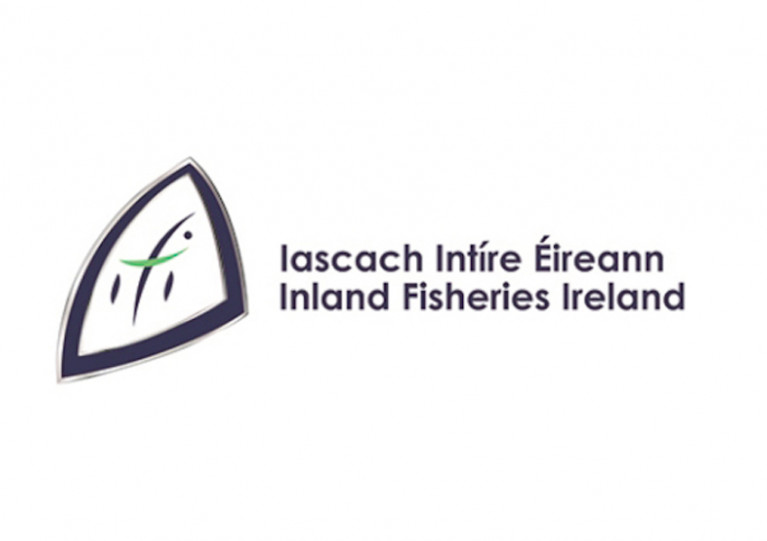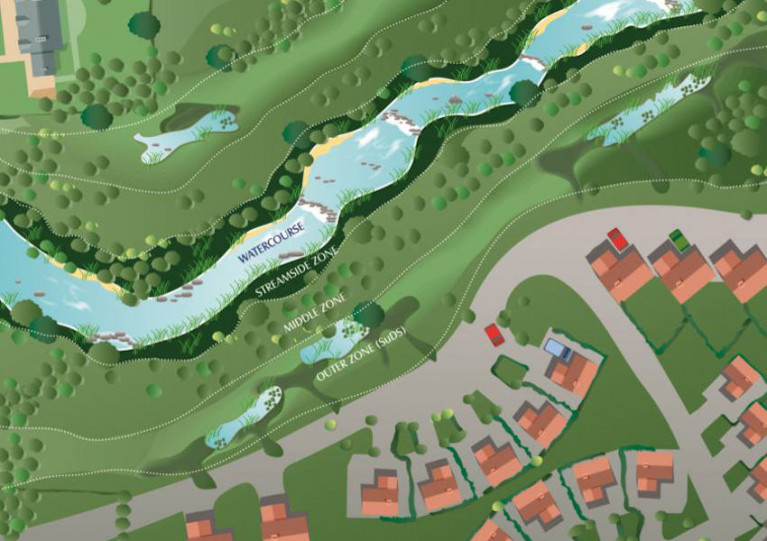Displaying items by tag: Inland Fisheries Ireland
Salmon & Sea Trout Angling Licences for 2021 Now Available
Inland Fisheries Ireland (IFI) has reopened its sales of salmon and sea trout angling licences for the 2021 season.
E-licences can now be purchased online and will be delivered along with a logbook straight to your phone or computer. Gill tags will be dispatched by post.
There is no price change for salmon and sea trout angling licences this year and licence fees will remain the same across all classes, including those for juvenile anglers.
Anglers are legally required to be in possession of a licence and logbook when fishing for salmon or sea trout. Online licences must be printed off along with the logbook and in the possession of anglers while fishing.
For anglers who require tags on or before Tuesday 5 January, online licences must be purchased on or before Monday 21 December.
Alternatively, angling licences will be available to purchase from approved licence sales distributors from the end of December/early January.
For those anglers who do not require tags in advance of 5 January, online licences and logbooks will be available from the IFI online shop throughout the Christmas period.
Anglers are advised to comply with Government guidelines specific to the region in which they live and wish to travel to. IFI has published updated advice for anglers, who are also reminded to check before travelling as due to Covid-19, working arrangements for distributors and fisheries may have changed.
IFI chief executive Francis O’Donnell said: “We are happy to announce the opening of 2021 licence sales for salmon and sea trout angling. We would like to use this opportunity to recognise the contribution salmon and sea trout anglers make to the sustainability of the resource by paying their licence fee and supporting the Salmon and Sea Trout Rehabilitation, Conservation, and Protection Fund as a result.”
The costs for salmon licences will remain as follows:
- All Districts (ie all Regions) Annual: €100
- Juvenile (under the age of 18 years) All Districts Annual: €10
- One District, Annual: €56
- All districts, 21 Days: €40
- All districts, 1 Day: €20
- Foyle Area Extension: €80
IFI also reminds all salmon and sea trout anglers to return their 2020 angling logbook and unused gill tags as soon as possible, even if there is no catch recorded.
Anglers are asked to make the return via the business return envelope which was supplied at the time of license purchase. Otherwise, anglers can return their completed logbook and unused tags to the IFI office address on their licence/logbook.
These returns will provide vital information regarding the status and management of our wild Atlantic salmon and sea trout stocks for the future.
Inland Fisheries Ireland Furthers ‘Going Green’ Initiative with Solar Panels to Power Headquarters
Inland Fisheries Ireland (IFI) has recently installed solar photovoltaic (PV) panels on its headquarters in CityWest, Dublin.
A total of 156 PV panels were installed on the main office roof and a further 154 were installed on the warehouse roof.
In 2019, IFI carried out audits on its largest energy-consuming premises and the two properties in CityWest showed the highest consumption of energy.
The solar PV panels will work to generate a portion of IFI’s electricity needs and will help reach the organisations energy reduction target of 33% by the end of 2020.
This climate action initiative is one among a host of other initiatives that IFI have introduced to help reduce the organisation’s overall emissions.
Last year it introduced energy-efficient vehicles with a view to achieving a 24% reduction in the C02 emissions from its fleet.
IFI also introduced new state-of-the-art RIBs to halve its energy usage on sea protection patrols. The use of kayaks and bikes are also maximised for patrol on coasts and inland waterways.
Environment and Climate Minister and Green Party leader Eamon Ryan, who also has responsibility for inland fisheries, said: “I want to acknowledge Inland Fisheries Ireland and the changes the organisation is making to contribute to Ireland’s climate ambition and the reduction of emissions by 7% annually.
“Renewable electricity is a central element of the Government’s action on climate disruption and Inland Fisheries Ireland are leading by example and working to decarbonise the organisation.
“Through these initiatives emissions will be cut, helping to improve the environment for us all.”
IFI chief executive Francis O’Donnell added: “As an environmental agency, we are aware of the critical nature of climate change and the impact it is having on our fisheries resource.
“Inland Fisheries Ireland as a public body has a responsibility to engage actively in initiatives to help take steps towards Ireland being a low carbon, climate-resilient economy.
“These newly installed solar PV panels on two of our highest energy-consuming premises will ensure that these buildings will have a combined total of circa 24% yearly energy savings.
“To maintain ecological integrity within our fisheries resource we must pave the way towards environmentally friendly ways of carrying out the work we do as an organisation.”
Co Galway Dairy Prosecuted Over Pollution of Deerpark River
A Co Galway dairy has been fined €1,000 following a successful prosecution for river pollution by Inland Fisheries Ireland (IFI).
At a sitting of Ballinasloe District Court on Thursday 1 October, it was heard that on 24 October 2019, IFI staff noticed a discharge of polluting matter entering the Deerpark River from Arrabawn Dairies, Kilconnell, Co Galway.
Results from samples showed higher-than-recommended levels for a number of parameters, including biochemical oxygen demand (BOD), ammonia and suspended solids.
Judge Gearty convicted Arrabawn Dairies under Section 171 of the Fisheries Acts and Section 4 of the Local Government (Water Pollution) Acts.
Fisheries Assistant Inspector Arnold Donnelly gave evidence emphasising the polluting nature of the discharge and that it was particularly unfortunate that the discharge occurred at a time of year when fish spawn in the river.
Judge Gearty fined the company €1,000 and awarded costs of €2,659 to IFI.
David Mc Inerney, director of the Shannon River Basin District at IFI, said: “Pollution events such as this have a very negative impact on water quality which is essential for the health of fish.
“The Deerpark River system is a tributary of the River Suck and holds excellent stocks of wild brown trout, crayfish and brook lamprey. Protection of water quality and habitats is critical to our rivers and fisheries ecosystems.”
Call for Community Groups & Angling Clubs to Apply for More Than €1 Million in Fisheries Funding
Since 2016, Inland Fisheries Ireland has awarded more than €4 million to over 200 sustainable angling projects across the country.
Now more eligible community groups and angling clubs can apply for the latest round of grant funding available to sustainable fisheries conservation and development projects, with over €1 million announced today (Friday 27 November).
Expressions of interest have been sought under two schemes funded by angler contributions: the €50,000 Midlands Fisheries Funds, which focuses on sustainable works in the midland fisheries permit area; and the €1 million Salmon and Sea Trout Rehabilitation, Conservation and Protection Fund.
To be eligible, applicants must have contributed to the relevant fund through the purchasing of a midland fisheries permit or a salmon and sea trout licence, whether for angling or commercial purposes.
Expressions of interest (that will progress to full applications) will be accepted from this Monday 30 November, and applications and must be submitted before 5.30pm on Thursday 28 January. Decisions on applications and grants will be announced in May next year.
Further information on the grant schemes available and how to apply is available from the IFI website.
A Co Cork dairy farmer has been fined €8,000 at Midleton District Court following a prosecution taken by Inland Fisheries Ireland (IFI).
On Thursday 12 November, Brian Duncan pleaded guilty before Judge Patricia Harney to polluting the Douglas River at Garryduff, Dungourney, Co Cork in April 2018.
The court heard that an initial discharge of slurry from his farmyard was followed by further reoccurrences, resulting in a number of court adjournments and hearings to allow completion of court-directed remedial works.
IFI gave evidence that the river had been severely polluted by the slurry discharges, which had rendered the riverine habitat inaccessible to spawning trout and salmon.
Evidence was also given that Duncan was running a large farm with a dairy herd in excess of 1,000 and that he had invested significantly in improving his yard facilities since the initial incident.
Judge Harney convicted Duncan under Section 171 (1) of the Fisheries Consolidation Act 1959 and Section 3 (1) of The Local Government Water Pollution Act 1977, awarding full costs and expenses of €8,139 to IFI.
While noting the remedial works, Sean Long, director of the South Western River Basin District, said: “Livestock manure and other organic fertilisers, effluents and soiled water have the potential to cause devastating effects on our fisheries resource.
“Good farmyard management and using preventative measures helps stop accidental discharges of polluting substances and protects the local environment, which will have a significant and lasting positive impact on valuable wild fish populations and general wellbeing in an area.
“I urge the farming community to remain vigilant to the risk of pollution from yards and slurry tanks. Inland Fisheries Ireland has a confidential hotline number to enable members of the general public to report incidents of water pollution, fish kills and illegal fishing – 1890 34 74 24 or 1890 FISH 24.’”
To prevent waters from being polluted by nitrogen and phosphorus when land-spreading, IFI advises farmers to refer to Good Agricultural Practice Regulations guidance on www.agriculture.gov.ie
New Research on Ferox Trout Highlights Its Importance to Lough Corrib & Lough Mask
A newly published research paper co-authored by experts in Ireland highlights the importance of ferox trout to the fisheries of Lough Corrib and Lough Mask.
Ferox trout are highly prized by trophy anglers, and Loughs Corrib and Mask have recorded the majority of Irish specimens since angling records began in the 1950s.
The large, long-lived, fish-eating trout are normally found in deep lakes and are believed to be genetically distinct from normal brown trout, having evolved after the last Ice Age 12,000 years ago.
Little was known about the spawning location of Irish ferox trout compared to normal brown trout, and a radio tracking study was initiated in both catchments in 2005.
Local anglers and Inland Fisheries Ireland (IFI) staff helped catch large ferox trout on both lakes in order to insert radio tags.
The fish were released after tagging and then tracked with help from the Irish Air Corps helicopter unit and by walking spawning streams with a radio tracking antenna to determine in which streams ferox spawned.
Scientists from Inland Fisheries Ireland worked with colleagues at the Norwegian Institute for Nature Research on the data collected in this study.
Results from radio tracking showed that the majority (92%) of ferox trout tagged in Lough Corrib spawned in a single spawning stream, the Cong River, while the majority (76%) of ferox trout tagged in Lough Mask spawned in the Cong canal and Cong River.
These results, as published in the Journal of Fish Biology, indicate that these streams are most likely the principle spawning locations of ferox trout in both lakes.
Dr Paddy Gargan, senior research officer at Inland Fisheries Ireland and lead author on the publication, said: “The occurrence of ferox trout predominantly in single spawning rivers in both catchments highlights the vulnerability of the ferox populations with estimates of their population size thought to be small”.
IFI’s head of research Dr Cathal Gallagher welcomed the findings and said: “It was important that conservation measures, based on this research, have been introduced in the Corrib and Mask catchments continue to protect ferox trout.
“These conservation measures have reduced the number of ferox trout being killed and claimed as specimens and support the conservation of this unique trout.”
Fisherman Fined €4,000 for Illegal Salmon Netting & Obstructing Fisheries Officers
A West Cork fisherman has been fined €4,000 plus costs after being found guilty on two counts of illegal fishing and the obstruction of Inland Fisheries Ireland (IFI) officers.
Evidence in relation to the offences by Donal Healy — with an address in Castletownbere, Co Cork — was given before Judge James McNulty sitting at Bantry District Court on Wednesday 28 October.
The breaches of fisheries legislation occurred on 5 July 2019 off Quarry Point in Co Cork.
IFI officers outlined the facts of the case to the court and how Healy had been observed drift-net fishing with a monofilament net off Quarry Point.
Healy attempted to prevent fisheries officers from boarding his vessel on its return to Blackball Harbour by casting off and pulling away from the pier. But IFI officers managed to board the vessel at sea and seized the illegal 300-metre-long salmon drift net.
Judge McNulty imposed fines of €2,000 for illegal fishing and €2,000 for obstructing the fisheries officers, and Healy was ordered to pay a further €500 in costs to IFI.
Sean Long, director of the South Western River Basin District, said: “I would like to commend the fisheries protection officers’ vigilance, perseverance and continuous commitment to protecting migrating salmon on their journey back to their spawning grounds. Mr Healy’s selfish actions put into jeopardy the very survival of a protected species in Irish rivers.
“This conviction highlights the ongoing issue of illegal netting for salmon and our zero tolerance of this serious environmental crime.
“I urge members of the public to continue to report instances of illegal fishing, water pollution and invasive species by calling Inland Fisheries Ireland’s confidential hotline number on 1890 34 74 24 or 1890 FISH 24.”
35 Projects Granted Funding Under ‘Angling for All’ Initiative
A total of 35 projects engaged with introducing novices to angling have been granted funding this year to the tune of €140,000.
Applications for the ‘Angling for All’ fund were welcomed by Inland Fisheries Ireland (IFI) from any group in Ireland engaged in encouraging novice anglers, for projects that support governance, education and safety in angling.
Four national projects are receiving funding, along with 31 regional projects including those by the National Coarse Fishing Federation of Ireland (NCFFI), Angling Council of Ireland (ACI), Salmon and Sea Trout Recreational Anglers of Ireland (SSTRAI) and Irish Federation of Pike Angling Clubs (IFPAC).
“The ‘Angling for All’ fund has been oversubscribed, reflecting the interest there is in angling countrywide,” said IFI’s head of business development Suzanne Campion.
“This financial investment of €140,000 will support the angling community directly to help make angling an accessible sport to novice angler of all backgrounds and abilities.
“The fund seeks to break down proven barriers to entering the sport and aims to improve governance, education and safety within angling stakeholder organisations.”
The full list of projects and initiatives receiving funding supported by the Dormant Accounts Fund can be found below:
| Organisation | Location | Project Title | Offer amount (€) |
| Connaught Angling Council | Mayo | Angling development | 4759.46 |
| Angling Council Ireland (ACI) | Nationwide | Child Safety, Coaching & Governance The Angling Council of Ireland #whatwedobest | 5000 |
| Cornamona and District Anglers Association | Galway | Inclusive Angling | 3300 |
| Weston Anglers | Limerick | Help the kids and keep the art of fishing alive | 4500 |
| Maigue Rivers Trust | Limerick | Fly Fishing on the Maigue | 4867.7 |
| James's Street CBS | Dublin | Transition Year Fishing Project | 4600 |
| Inniscarra Fishing | Cork | Fishing for All on Inniscarra | 5000 |
| Tullamore and District Angling Club | Offaly | Junior Anglers 2021 | 2400 |
| SSTRAI Rathcormac Angling Group | Cork | Rathcormac Angling Hub Cast Programme fly tying for Rathcormac Scout Group | 2000 |
| Salmon & Sea Trout Recreational Anglers Ireland | Nationwide | SSTRAI New Starter Hubs 2021 (equipment) | 5000 |
| Macroom Trout Angling club | Cork | West Muskerry Angling Club | 3270 |
| Lough Ree Lanesborough Angling Hub | Longford | Access and coaching for youth and disabled | 5000 |
| St John Bosco Youth Centre | Dublin | Bosco Fishing Initiative | 2100 |
| Youth Action Castlebar | Mayo | Youth Action Castlebar | 2200 |
| Youth Action Ballina | Mayo | Youth Fishing Initiative | 3300 |
| Bannow Bay Sea Angling Club | Wexford | Shore Fishing for all. | 4500 |
| Mountmellick Angling Club | Laois | Mountmellick Angling for all | 4895 |
| Fermoy river youth And amenity group | Cork | Training for youth and vulnerable adults | 4810 |
| Waterford and District Coarse angling club | Waterford | WDCAC coaching program | 4900 |
| St. Pauls youth fishing club | Waterford | Waterford city youth outreach | 4850 |
| Lough Ree Access For All CLG | Roscommon | Lough Ree Access For All Angling Safaris | 5000 |
| Oaklands Coarse Angling club | Wexford | Oaklands Angling Camps | 4900 |
| Deele Community Anglers | Donegal | Wefish Nature Educates. | 4800 |
| Foroige Connect | Mayo | Foroige Connect | 2200 |
| FORUM Connemara Clg | Galway | Angling for young people with disability | 2500 |
| SSTRAI Glanmire & District Salmon & Trout Anglers Association | Cork | Tibbotstown Reservoir Fishery | 3500 |
| Killinarden Angling Initiative | Dublin | Angling in Dublin Vlog | 4000 |
| Irish Federation of Pike Angling Clubs | Dublin | All Ireland Junior Angling Championships and Novice Angler Coaching | 5000 |
| National Coarse Fishing Federation of Ireland | Nationwide | On-Line Governmence Support for Clubs | 4500 |
| Maugherow Sea Angling Club | Sligo | Establishment of New Sea Angling Club in North Sligo (Maugherow Sea Angling Club) | 4000 |
| Silver Anglers Kilcormac | Offaly | Silver Anglers Future Fishing Development Project | 4250 |
| Munster Provisional Council of the Irish Federation of Sea Anglers | Cork | Munster Juvenile Boat Angling | 4992 |
| Inagh River Catchment Management Association | Clare | Inagh River Youth Angling Initiative | 3140 |
| Mullingar Tidy Towns | Westmeath | Fishing for all Mullingar | 3830 |
| Coomhola National School | Cork | Angling: A Sense of Place | 2300 |
Untreated Waste Water Impacts Our Fisheries Resource, Says Angling Agency
Inland Fisheries Ireland (IFI) says it welcomes the Environmental Protection Agency’s new report on urban waste water treatment in 2019.
Published this week, the EPA’s report criticises Irish Water over failure to meet pollution prevention standards at treatment facilities for 19 large towns and cities around Ireland.
Commenting on the report, IFI’s head of operations Dr Greg Forde said: “Continuing untreated discharges to waters around Ireland pose an unacceptable risk to the environment and public health.
“These untreated discharges are preventing the recovery of the biodiversity and ecology of significant rivers, estuaries and also where discharges go direct to the sea.
“It is unacceptable that many rivers are failing to recover due to persistent untreated discharges or overflow discharges where the capacity of treatment plants is inadequate to address growing populations.”
Dr Forde added that IFI is also concerned about the 35 predominantly coastal towns and villages without proper facilities for the treatment of sewage.
“It is not until 2022 that a significant number of these plants will come online,” he said.
As previously reported on Afloat.ie, IFI has launched updated guidelines on ‘Planning for Watercourses in the Urban Environment’ which outline an integrated watercourse protection strategy.
Inland Fisheries Ireland Updates ‘Planning for Watercourses in the Urban Environment’ Guidelines
Inland Fisheries Ireland (IFI) has launched an update of its guideline document ‘Planning for Watercourses in the Urban Environment’.
It outlines an integrated watercourse protection strategy that has been developed by IFI through consultation with a wide range of experts in the area.
Watercourses including rivers, lakes and streams are an integral part of our environment — and if managed appropriately can significantly improve the quality of life for people living in urban areas, IFI says.
The strategy adopts a ‘four-step’ approach to watercourse protection planning which should not only protect watercourses and their associated riverside zones in urban areas, but also provide other benefits important for the wellbeing of people living nearby.

IFI chief executive Francis O’Donnell emphasises that both “nature-based catchment management” and “a holistic approach to addressing our biodiversity and climate challenges” are crucial for sustainable development going forward.
“These updated guidelines approach the issue of planning for watercourses in urban environments from a multi-stakeholder perspective and seek to maximise the significant co-benefits that will arise from adoption of a comprehensive, all-inclusive strategy,” he says.
“These benefits range from better water quality and more resilient and natural ecosystems to the well-established positive effects of nature and green areas for community wellbeing, recreation, health and recovery from serious illness and even reduced levels of antisocial behaviour.
“We hope these guidelines will be a useful resource for all of Irish society.”


























